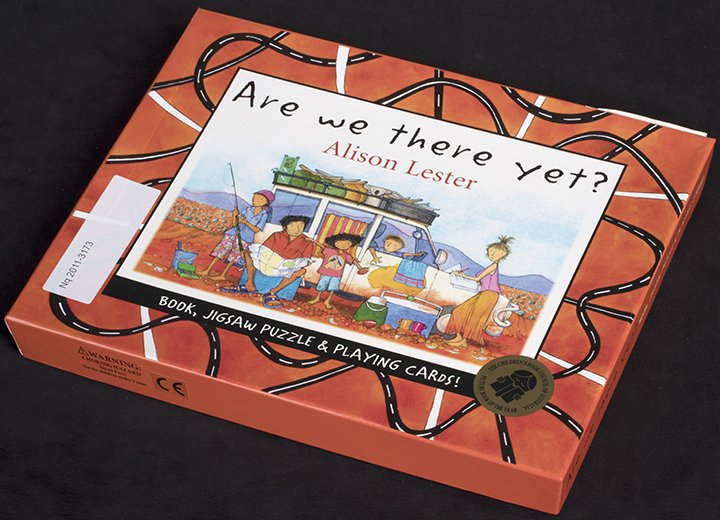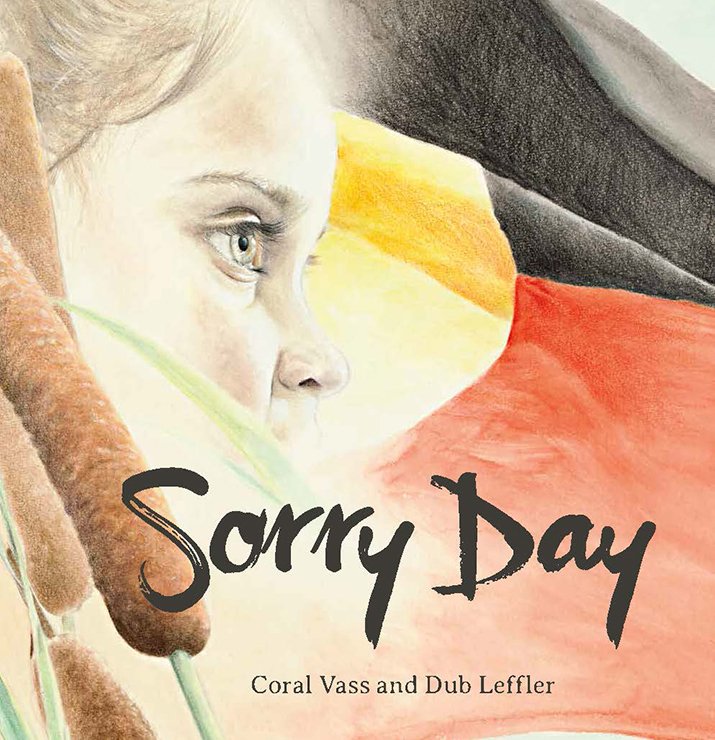When asked to choose my favourite books from the collection of children’s literature on display in the Story Time: Australian Children’s Literature exhibition at the National Library of Australia, it was like trying to choose my favourite child. With such a rich collection on display, I decided to choose three books that I think are unique to Australia and best represent Australia in Australian children’s literature.
Are We There Yet by Alison Lester
Alison Lester, Are Whe There Yet?: A Journey around Australia (Camberwell, Vic.: Viking, 2011),Book, Jigsaw Puzzle and Playing Cards box set, nla.cat-vn4402053
When we lived in Japan, we loved to take road trips from Tokyo to Kyoto, or Kyoto to Hiroshima. The Japanese thought we were crazy to drive all that way. To them, it made more sense to jump on a bullet train and be in the next city with no fuss and in no time at all. But, as all Aussies would agree, part of the fun is not the destination, but the actual journey. And on that journey, the question ‘Are we there yet?’ has become iconic.
Told from the perspective of young Grace, Are We There Yet? takes the reader on a journey around Australia from Geraldton to Darwin, Cloncurry to Cairns and Hobart to Phillip Island, as Billy consistently asks that refrain of every child: ‘Are we there yet?’
Alison Lester has cleverly written and illustrated a travel-journal, a scrapbook, a map and a children’s book all in one. I love this book because it not only celebrates Australia as a country, but what it means to be Australian.
The Little Refugee by Anh Do and Bruce Whatley
Illustration from The Little Refugee by Anh Do with Suzanne Do; illustrated by Bruce Whatley (Crows Nest, NSW: Allen & Unwin, 2011), nla.cat-vn5350411, courtesy Allen & Unwin Book Publishers
On 26 April 1976, the first boat carrying five Vietnamese refugees arrived at Darwin Harbour. Over the next 20 years, Australia resettled more than 100,000 Vietnamese refugees, with an annual intake of up to 22,000 refugees in the 1980s, the largest number in 30 years and a level Australia has not seen since. This influx of refugees changed the face of Australia and helped shape Australia into what it is today.
The Little Refugee is the honest and heartfelt true story of Anh Do, one of Australia’s best-loved comedians, and his family’s survival against all odds as they escaped war-torn Vietnam, travelled by boat across the South China Sea and began a new life in Australia.
I absolutely love this book. Told in the first person from a child’s perspective, it gives the reader deep insight into the plight of refugees, eliciting empathy and compassion ‘for those who’ve come across the seas’to share our ‘boundless plains’.
Sorry Day by Coral Vass and Dub Leffler
Coral Vass and Dub Leffler, Sorry Day (Canberra: NLA Publishing, 2018), nla.cat-vn7460519
I am delighted that one of my own books was included in the exhibition. Sorry Day, illustrated by the talented Dub Leffler of the Bigambul people, is not only an account of Australian history, it is a truth-telling.
Sorry Day tells the story of Maggie and her mother, who watch the Prime Minister give his apology to the Stolen Generations on behalf of the Australian government. At the same time, some 60 years earlier, a group of young Indigenous children play hide and seek by a creek on the fateful day they are taken from their families.
In that one powerful word, ‘sorry’, there is hope—hope that what has been would never be again. Sorry Day is the history of all of us, both Indigenous and non-Indigenous. These conversations are not easy to have, they are not comfortable to have, but they are essential to have. For it is only in acknowledging past wrongs that forgiveness is facilitated, healing can begin and reconciliation can be achieved in our nation.
Coral Vass is an author, editor and presenter. She has written eight books for children. They are predominantly fiction but some touch on moments in Australian history, including NLA Publishing’s Sorry Day, released in 2018. Find out more on her website.


